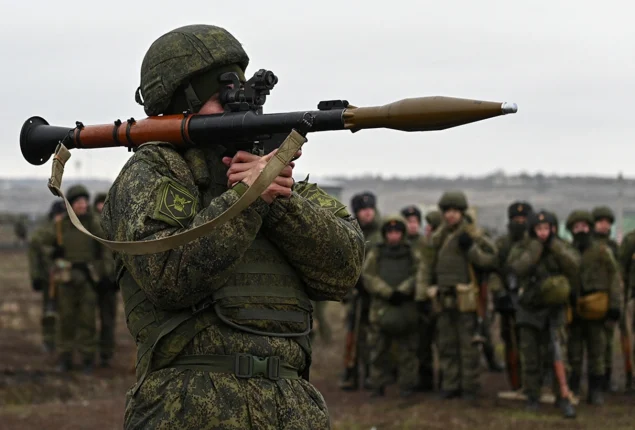
The war in Ukraine is entering a new and volatile chapter, as Russian forces notch small but symbolically significant advances on the battlefield while Ukraine strikes deep into the heart of Russia’s oil infrastructure, escalating a conflict that increasingly spans both military and economic fronts.
Russian Advance in Dnipropetrovsk:
Ukrainian open-source researchers confirmed Tuesday that Russian troops have captured the villages of Zaporizke and Novoheorhiivka in Ukraine’s southeastern Dnipropetrovsk region. Russia’s defense ministry quickly claimed the advances, though Kyiv disputed the scale of the occupation.
“Russians have entered and are attempting to establish a foothold,” Ukrainian military spokesperson Viktor Trehubov told Reuters. “Our forces are fighting to maintain their positions.”
While these are comparatively small settlements in a region of more than 31,000 square kilometers, they symbolize Moscow’s determination to push beyond the five Ukrainian regions it has already claimed as its own. President Volodymyr Zelensky dismissed the offensive as an effort to win a “media victory,” but the incremental gains underline the pressure Ukraine faces as its overstretched forces fight to hold the line.
Mobilization Despite Heavy Losses:
Russia’s military campaign has come at extraordinary human cost. Western estimates suggest more than a million Russian soldiers have been killed or wounded since the invasion began — figures Moscow does not disclose but which align with independent analysis.
Yet the Kremlin continues to replenish its ranks. Ukrainian intelligence reports that Moscow aims to add 150,000 soldiers this year, with monthly recruitment quotas exceeding targets. Analysts say changes in battlefield tactics are helping reduce losses: Russia now deploys small infiltration units supported by drones and artillery rather than large armored columns that proved vulnerable to Ukraine’s defenses.
In the war’s early stages, many young Russians fled conscription. But forced mobilization has since given way to a steadier system, with fewer crackdowns and more organized recruitment.
“Russia has almost stopped using heavy equipment because it is highly vulnerable to drones,” said Oleg Ignatov, a senior analyst at Crisis Group. “Small groups, sometimes one or two soldiers, infiltrate under drone cover. This reduces casualties while allowing Russia to grind forward.”
Ukraine’s Counter: Striking Oil:
The attacks have caused gasoline shortages in southern Russia, annexed Crimea, and as far as Vladivostok. Queues at petrol stations stretch for hours, with some regions forced to switch to more expensive fuel grades. Despite government subsidies, Russian consumers are paying record prices, further straining household budgets.
The strikes, analysts say, are designed to hurt the Russian war machine while also disrupting daily life. “The understanding that this is the result of the good drones’ work on the Russian economy does not allow me to be sad,” wrote one pro-Ukrainian activist in Crimea.
Economic Pressure on the Kremlin:
The impact is particularly acute because oil and gas exports account for a quarter of Russia’s state budget — funding a 25% increase in defense spending this year, the highest since the Cold War.
While Moscow has redirected crude exports to Asia following Western sanctions, the loss of refinery capacity is forcing it to prioritize crude shipments over gasoline production, compounding domestic shortages. Analysts expect fuel prices to remain high through the autumn despite a government ban on gasoline exports.
Ukraine, meanwhile, is touting new capabilities. Last week it unveiled the domestically produced Flamingo cruise missile, designed to strike deep inside Russia. With a 1,150-kilogram warhead and a lethal blast radius exceeding 30 meters, analysts say even a limited number of successful strikes could cause outsized damage to Russia’s energy sector.
A War on Two Fronts:
The struggle now playing out highlights the dual dimensions of the conflict: Russia inching forward on the battlefield with a strategy of attrition, while Ukraine seeks to bleed Moscow’s economy through long-range strikes.
Kyiv hopes this combination can strengthen its hand in potential peace talks, particularly after U.S. President Donald Trump met with Vladimir Putin in Alaska earlier this month.
For ordinary Russians and Ukrainians, though, the toll is measured less in geopolitics than in daily survival — from families in Crimea rationing fuel to civilians in eastern Ukraine bracing for another round of bombardments.
Read More News On
Catch all the International News, Trending News, Breaking News Event and Latest News Updates on The BOL News
Download The BOL News App to get the Daily News Update & Follow us on Google News.




